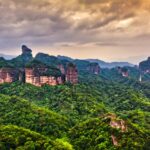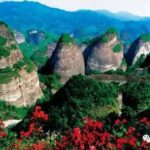
Longhushan, originally named Yunjin Mountain, is a picturesque mountain located 20 kilometers southwest of Yingtan City in Jiangxi Province. It stands as a unique and beautiful landmark in the Jiangnan region.
In the mid-Eastern Han Dynasty, Zhang Daoling, the founder of the Zhengyi Taoist sect, was said to have refined elixirs here. Legend has it that “when the elixir was complete, dragons and tigers appeared,” hence the mountain’s name. The mountain range stretches for dozens of miles, formed by the westward extension of Xiangshan (Yingtian Mountain). Among these peaks, Tianmen Mountain is the highest, reaching an altitude of 1,300 meters. Folklore speaks of ninety-nine dragons gathering here, with the mountain’s shape resembling a coiled dragon or a crouching tiger, locked in an eternal struggle for supremacy.
The Shangqing Stream meanders from the east, flowing gently along the mountain, winding around peaks, sometimes appearing to rest or linger to admire the scenery. It turns white over rapids and green in deep pools, sometimes whispering softly, sometimes in silent contemplation.
With ninety-nine peaks and twenty-four rock formations, the mountain embraces the gentle nature of water through its winding streams, while also embodying the yang energy of the ninety-nine dragons. The combination of red mountains and green waters creates a deeply spiritual atmosphere. Longhushan is considered the ancestral court of the Zhengyi Taoist sect, playing a pivotal role in Chinese Taoist history and is renowned as a Taoist paradise.
Additionally, the Xiangshan Shuyuan (Academy) in the Longhushan scenic area is the birthplace of the “Sudden Enlightenment” school of ancient Chinese philosophy. Jinlong Peak’s Mazu Rock was an early site of Chan meditation for Master Mazu Daoyi, one of the most influential Chan masters in history. The cliff tombs of Xianshui Rock are a marvel in Chinese burial history. The “Fairy Offering Flowers” is considered the most spectacular scene in Taoism and one of the world’s most unique sights.
Longhushan’s rich Taoist cultural heritage, accumulated over thousands of years, its prominent status as the ancestral court in Chinese Taoist history, and its contributions to the development of Chinese Taoism have earned it recognition as the “First Mountain of Taoism.” It also holds a significant place in world religious history.
While most of China’s Danxia landforms are characterized by their majestic and steep features due to significant elevation differences, Longhushan represents a mature stage of Danxia landform development. Its scattered peaks form a forest-like landscape with relatively small elevation differences, the largest being only about 240 meters, giving it an overall graceful and diverse appearance. The Danxia landforms in Longhushan are varied and concentrated within an area of about 40 square kilometers in the Longhushan and Xianshuiyan scenic areas.
The Luxi River flows through the scenic area, connecting the Danxia landscape on both banks and creating a unique combination of clear waters and red cliffs. Longhushan is known as the “Danxia Fairyland,” and its Taoist holy site, the combination of clear waters and red mountains, and the ancient cliff tombs are celebrated as its “three wonders.” The main scenic areas include Shangqing Palace, Tianshi Mansion, Xianyan Shuiyan, the Cliff Tomb Cluster, Xiangbishan Paiya Stone, and the solitary peak of Mazu Rock.

The Shangqing Palace Scenic Area’s predecessor was the Tianshi thatched cottage built by Zhang Daoling, the Taoist patriarch, when he settled on Longhushan to refine elixirs. Founded in the Eastern Han Dynasty, it is a place of Taoist worship and one of China’s ancient architectural complexes formed on the basis of respecting heaven and ancestral worship.
Shangqing Palace is one of the most important Taoist sites on Longhushan, where generations of Zhangfei Tianshi engaged in major Taoist activities such as expounding doctrines and conferring Taoist registers. Known as the “Taoist General Assembly” and “Immortal Dwelling,” its grand palaces and pavilions are scattered throughout the mountains. Its scale is not only the crown of Jiangnan Taoist temples but also stands out nationwide.
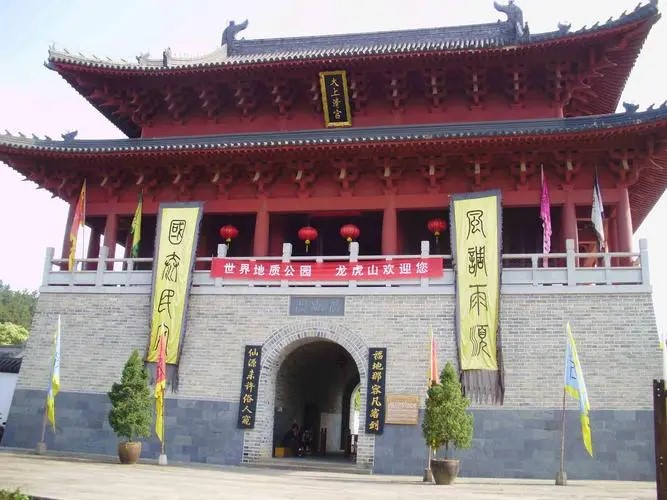
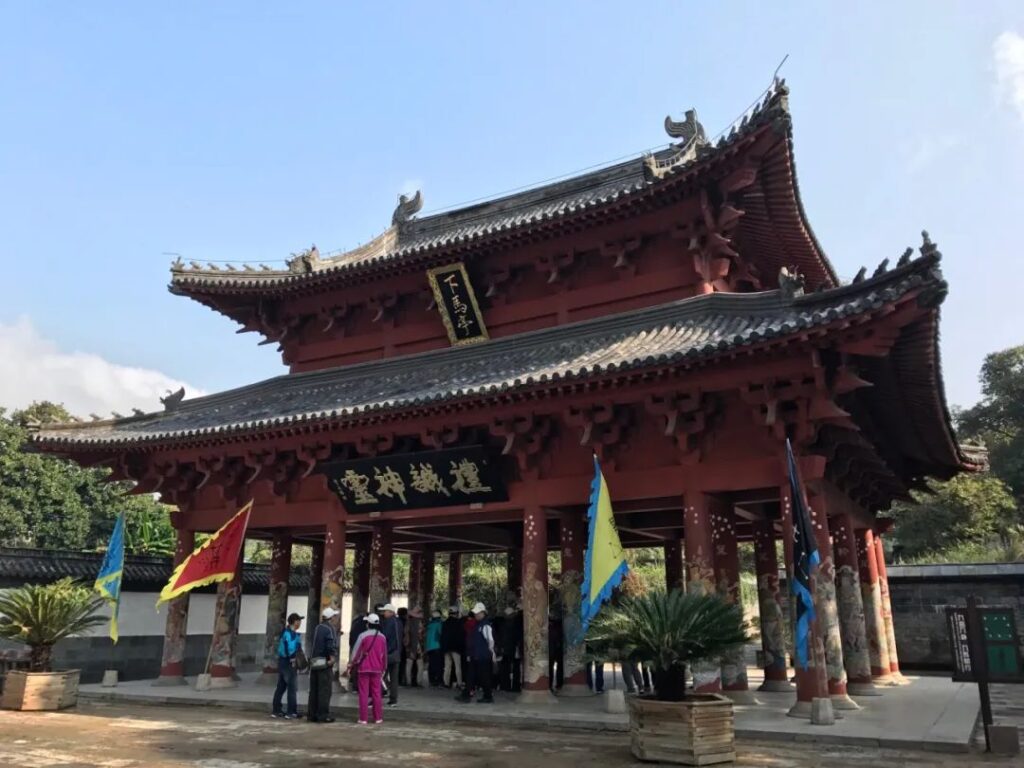
The Tianshi Mansion Scenic Area, officially named “Sihan Tianshi Mansion,” covers an area of 50,000 square meters with over 500 rooms. Located in the center of today’s Shangqing Town in Yingtan City, it faces Pipa Peak, with its entrance by the Luxi River and its back against Huashan Mountain.
The mansion’s layout combines traditional Chinese mansion standards with some characteristics of feudal government offices while maintaining a distinct Zhengyi Taoist style. In the Ming Dynasty, Emperor Taizu changed the title of Tianshi to “Da Zhenren” (Great Perfected Being), so it is also called “Da Zhenren Mansion.” It has been the residence and place of worship for generations of Tianshi, as well as the ancestral court of the Zhengyi Taoist sect, boasting a long history and prominent status.
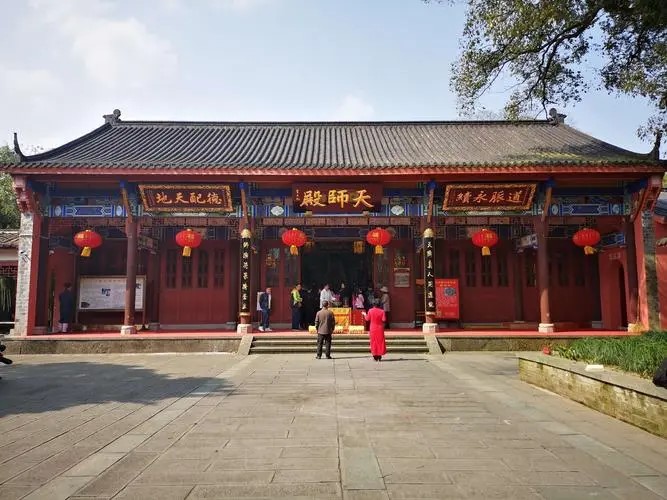
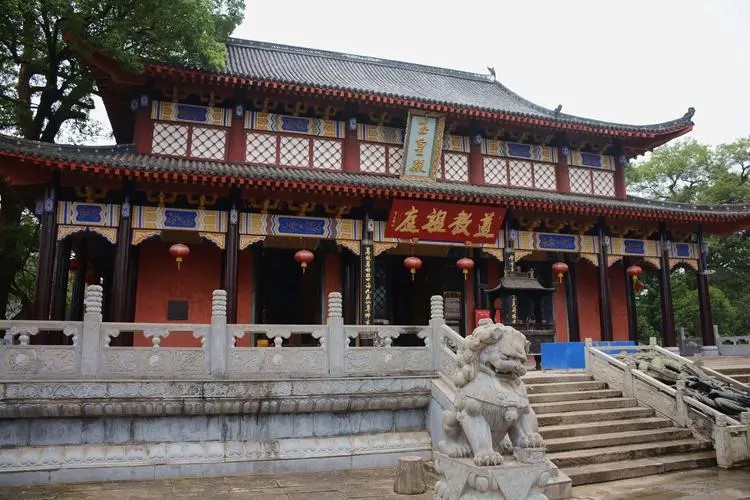
The Xianshuiyan Scenic Area can be reached by bamboo raft along the Luxi River from the foot of Longhushan. Within seven li (about 3.5 km), there are over a hundred peaks, among which the most famous are the 24 peaks known as “Xianshuiyan.” Xianshuiyan are vertical caves formed by water erosion along the intersection of two sets of joints, followed by gravitational collapse. The cave bottoms have developed into V-shaped hanging grooves.
Here, clear streams wind around mountains, strange peaks lie across the water, and the surrounding scenery is breathtakingly beautiful, earning it the nickname “Little Lijiang.” The rocks on both banks take on countless bizarre shapes, especially the famous “Ten Unattainables” rock formations, which are vivid and full of wonder. From Shangqing Wharf, visitors can take bamboo rafts to see not only the “Ten Unattainables” scenic spots but also witness performances of ancient hanging coffins.
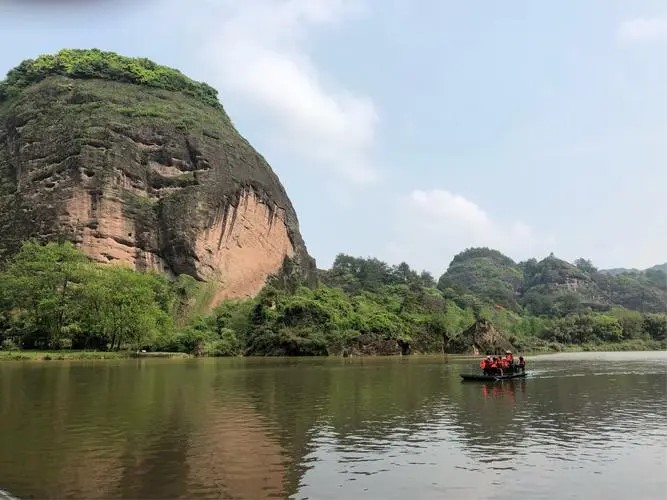

Cliff Tomb Cluster Scenic Area
On the steep cliffs of Xianshuiyan, hundreds of cliff tombs dating back over 2,600 years are scattered. These caves vary in size and contain ancient coffins, featuring single-cave single burials, single-cave group burials, and connected-cave group burials. To date, 39 coffins have been excavated, along with 16 complete human skeletons and over 200 artifacts including pottery, celadon, silk and linen fabrics, musical instruments, and wooden and bamboo utensils, some of which are extremely rare treasures.
After authentication, these tombs have been identified as early Warring States period burials. The hanging coffin phenomenon at Xianshuiyan has attracted keen interest from domestic and international archaeologists, becoming a research base for Chinese ethnology, folklore, and archaeological studies. Currently, the site offers a reenactment of the ancient hanging coffin hoisting technique for visitors to enjoy.


Xiangbishan Paiya Stone Scenic Area
Xiangbishan (Elephant Trunk Mountain) is a landscape featuring stone beams and holes formed by long-term erosion, weathering, and collapse. The approximately 100-meter-high peak has a stone beam suspended in mid-air, making the entire mountain resemble a giant stone elephant drinking water.
Paiya Peak stretches for about 2 kilometers, with its highest point at 267.5 meters. It is composed of multiple connected peaks, forming a cluster-type landscape shaped by long-term water erosion. The mountain range runs north-south in a narrow, elongated form. From north to south, the main peaks include: Sanqing Lundao Peak in the north, Bajie Mengxian Peak, Carp Peak, Zhuangyuan Peak, and Candle Peak in the middle, and Dadao Qie Peak in the south.


Solitary Peak Mazu Rock Scenic Area
Mazu Rock, also known as Jilong Peak, is located north of Paiya Stone. Legend has it that the Tang Dynasty Buddhist master Mazu once preached here, hence its name. The mountain has two caves that can accommodate a thousand people. A Buddhist temple was once built in the cave but has since collapsed. In front of the rock is Chujiu Stone, standing 111 meters tall on the bank of the Shangqing River, resembling a giant pillar holding up the sky. Nearby is Monkey Head Rock, connected to Chujiu Stone by ancient vines, known as “Iron Pillar Locking the Golden Monkey.“

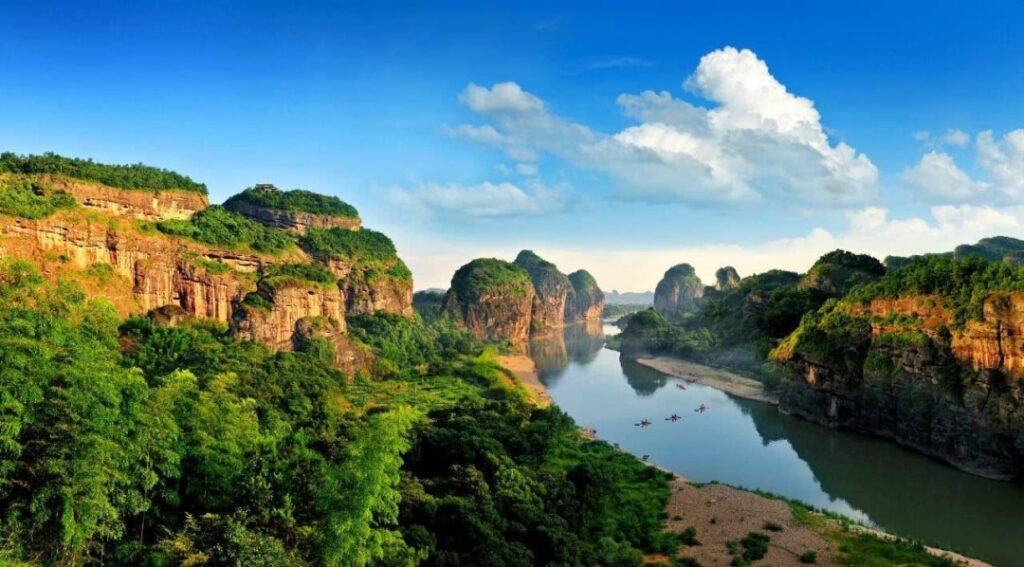
Mountain Climbing Guide
Transportation
Longhushan is located 16 kilometers south of Yingtan City in Jiangxi Province. It has been renowned since ancient times as a “dwelling place of immortals” and an “earthly paradise.” It is the birthplace of Taoism in China and a historically famous Taoist mountain, one of the 72 blessed places of Taoism.
To reach Longhushan, visitors typically first arrive in Yingtan City and then proceed to the mountain. Yingtan has two railway stations: Yingtan Station and Yingtan North Station, and a bus station called Yingtan Passenger Transport Station. Yingtan does not have an airport; the nearest airports are Sanqingshan Airport and Nanchang Changbei International Airport. The main mode of transportation to Longhushan is by train. Here are detailed instructions for various transportation methods:
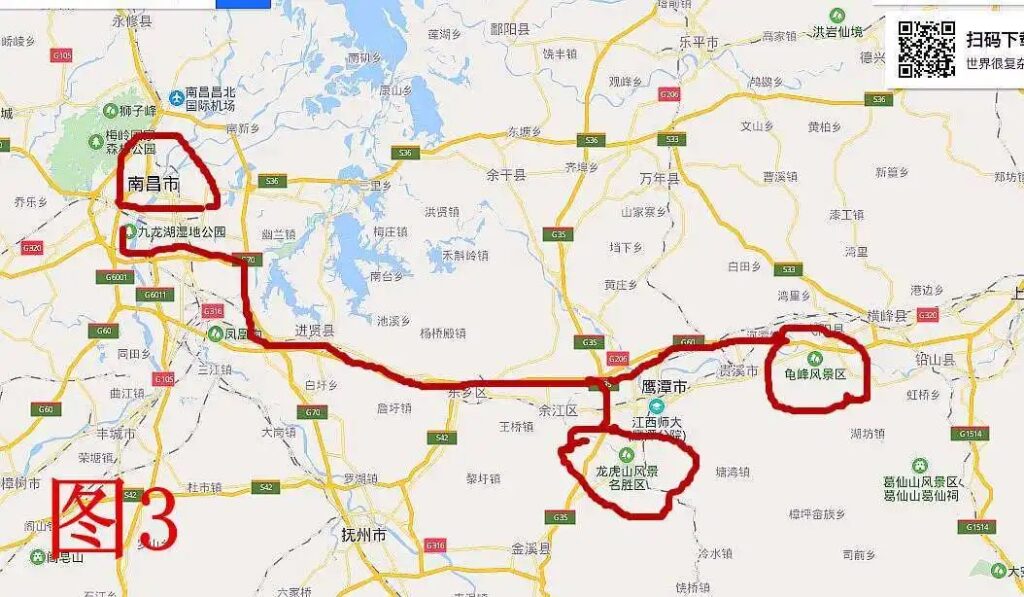

① By Train:
Yingtan Station: This is a regular train station. After arriving at Yingtan Station, take the K2 bus from the station to the Longhushan Visitor Center, which takes about 50 minutes.
Yingtan North Station: This is a high-speed rail station.
After arriving at Yingtan North Station, you can either take a direct ride-hailing service to Longhushan Scenic Area or first take bus No. 23 to Yingtan Station, then transfer to the K2 bus to reach the Longhushan Visitor Center.
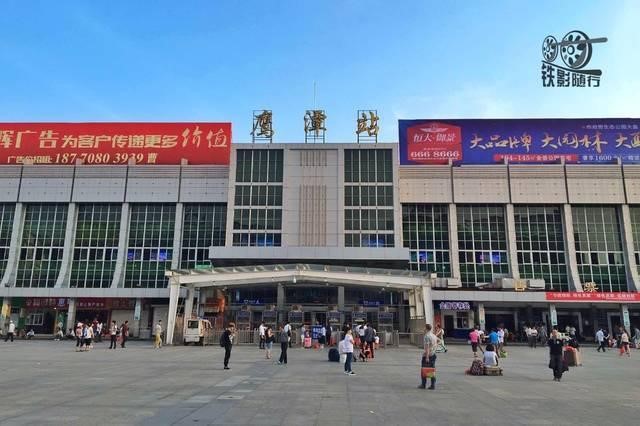

② By Bus:
Yingtan Passenger Transport Station: If arriving by long-distance bus from within the province or nearby areas, take the K2 bus directly from the station to the Longhushan Visitor Center.
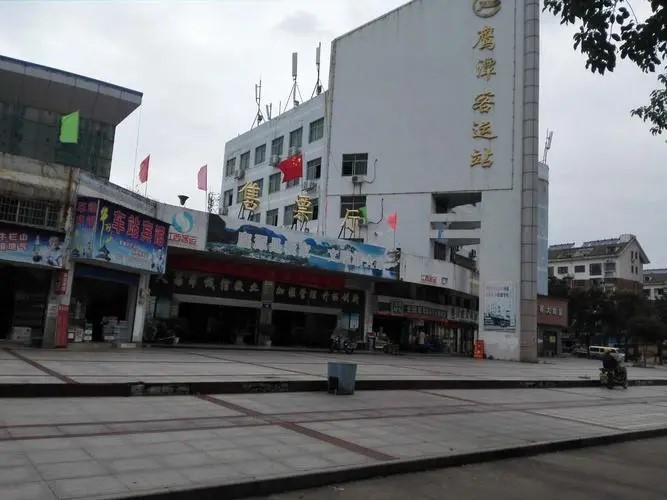
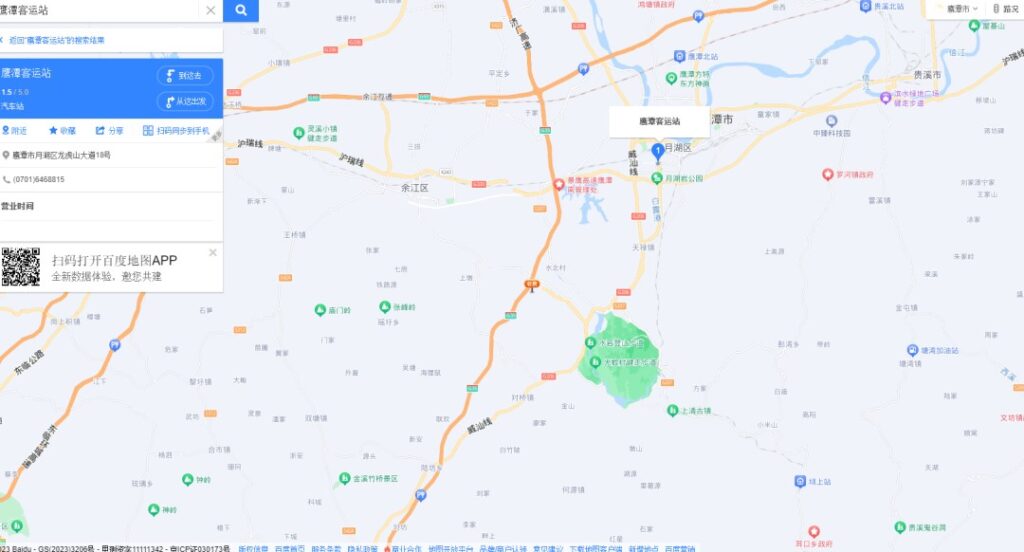
③ By Air:
Sanqingshan Airport: Located about 130 kilometers from the Longhushan Visitor Center. After flying to Sanqingshan Airport, you need to first travel to Yingtan City, then proceed to Longhushan, or hire a private car directly to Longhushan.
Nanchang Changbei International Airport: Located about 180 kilometers from the Longhushan Visitor Center. After flying to Nanchang Airport, travel to Nanchang City, then take a high-speed train or regular train to Yingtan, and finally proceed to Longhushan, or hire a private car directly to Longhushan.
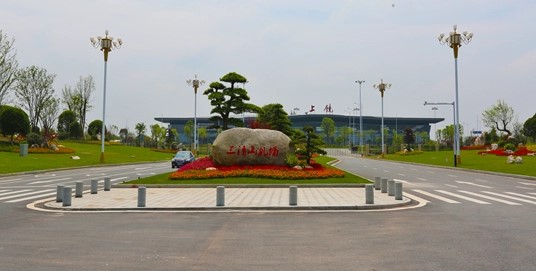

④ By Car:
If driving, exit at the Longhushan highway exit and follow the navigation to “Longhushan Scenic Area Visitor Center” to reach the scenic area.


Accommodation
Although the Longhushan Scenic Area is not very large, visitors typically plan for a 2-day stay to explore all the core scenic areas thoroughly. Shuttle buses are available between various attractions, making the visit relatively comfortable. Accommodation is mainly concentrated near the visitor center, the west gate of the scenic area, and around Shangqing Ancient Town. Alternatively, visitors can choose to stay in Yingtan City, where living conditions might be slightly better. If arriving late on the first day, it may be more convenient to stay in Yingtan City.
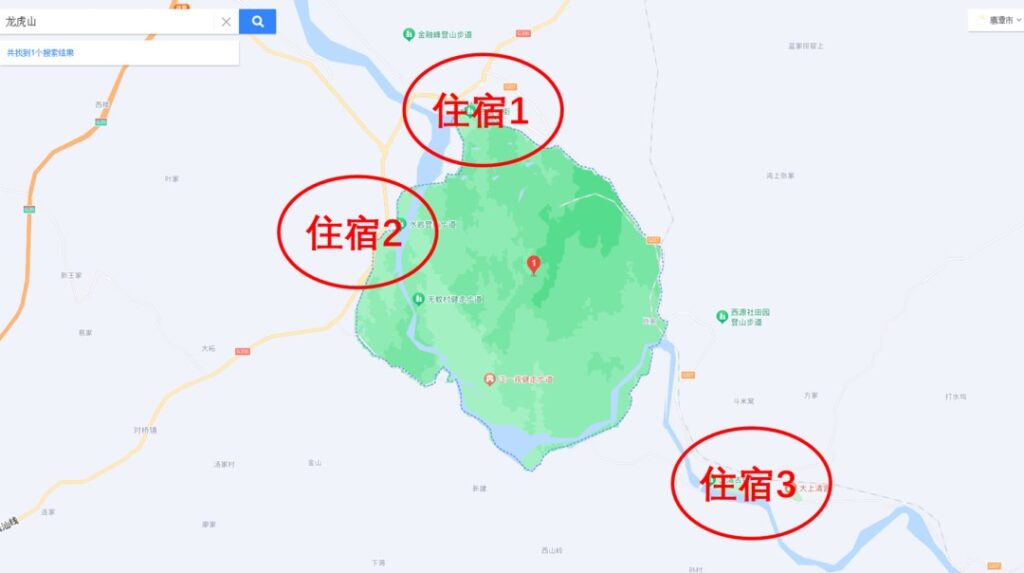
Accommodation near the visitor center includes numerous hotels and guesthouses. This area is close to the visitor center and has good amenities, including supermarkets and restaurants. However, it can be relatively noisy, and many guesthouses are converted residential buildings with restaurants on the ground floor and lodging upstairs. The main advantage is the low price, making it a suitable option for late arrivals.

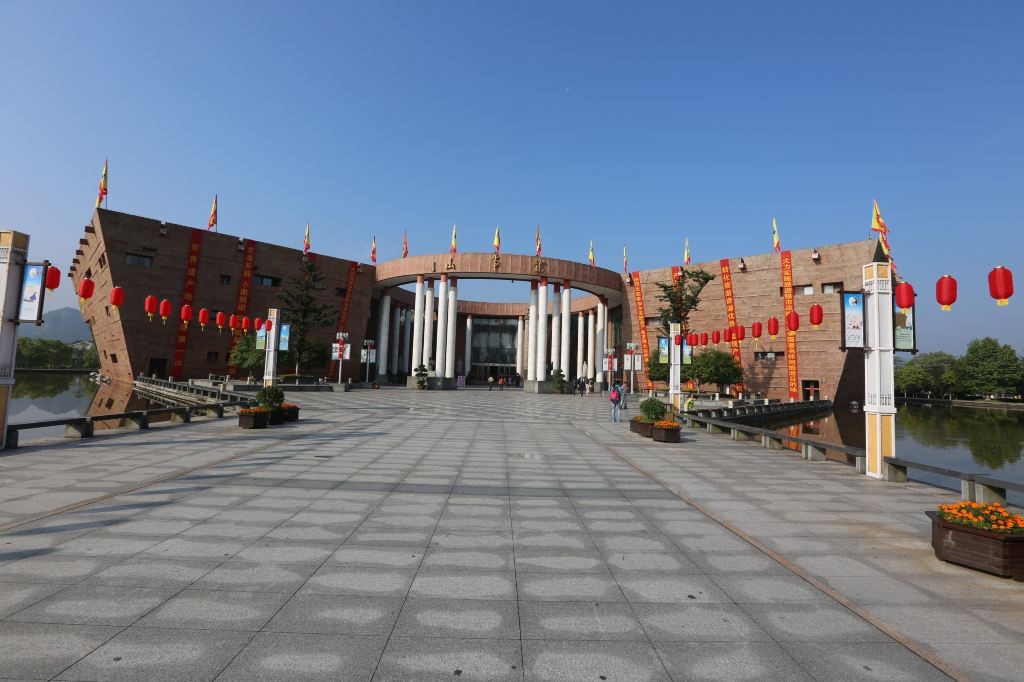
Near the west gate of the scenic area, there are many inns, guesthouses, and mountain resorts. This area is close to the west gate, separated from the scenic area by a body of water, and offers a better environment for a more comfortable stay. However, amenities like supermarkets and restaurants are slightly less convenient. This area is recommended for stays of two days or more, or for those seeking a relaxing vacation.
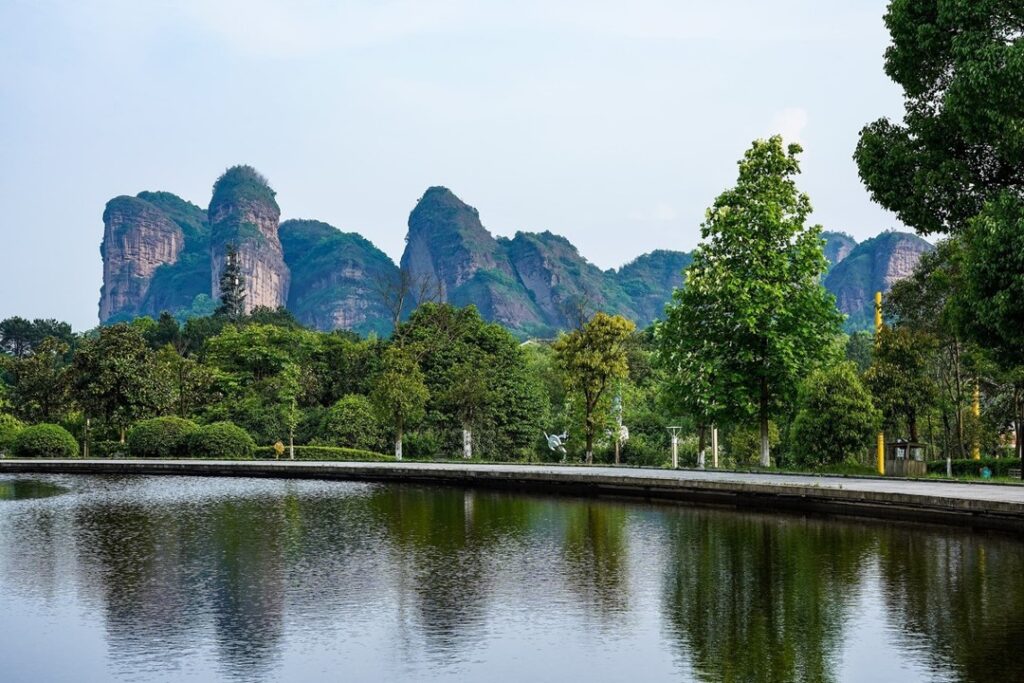
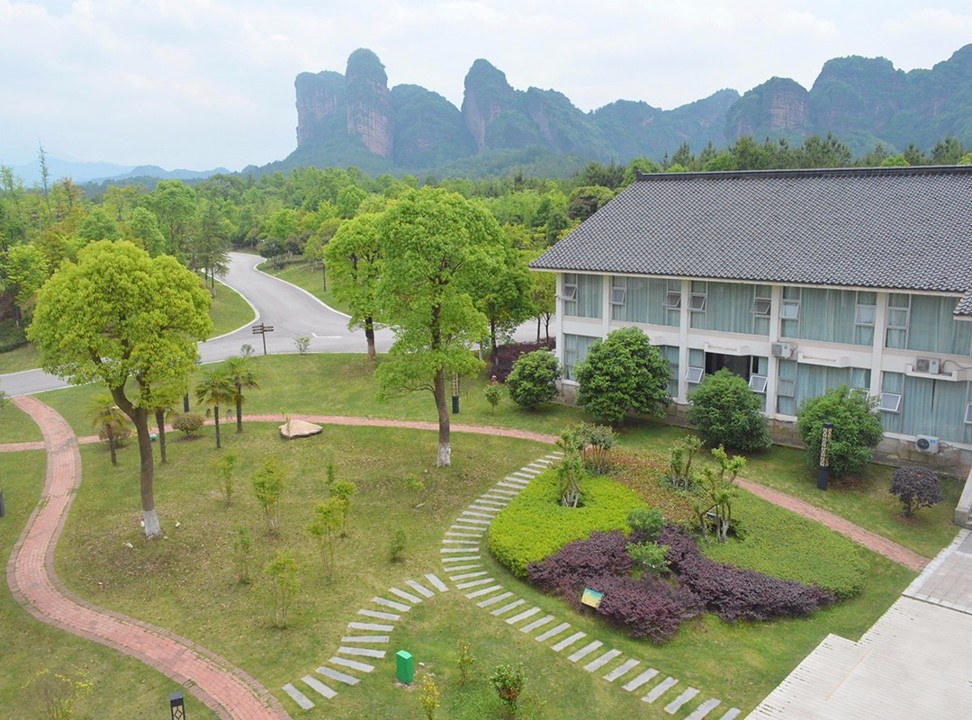
Accommodation around Shangqing Ancient Town, located in the southeast corner of Longhushan, is technically outside the Longhushan area. The ancient town contains two sub-attractions: the Heavenly Master Ancestral Temple and the Han Dynasty Heavenly Master Mansion. The town has many hotels and guesthouses with excellent amenities, making it a good choice for multi-day stays.
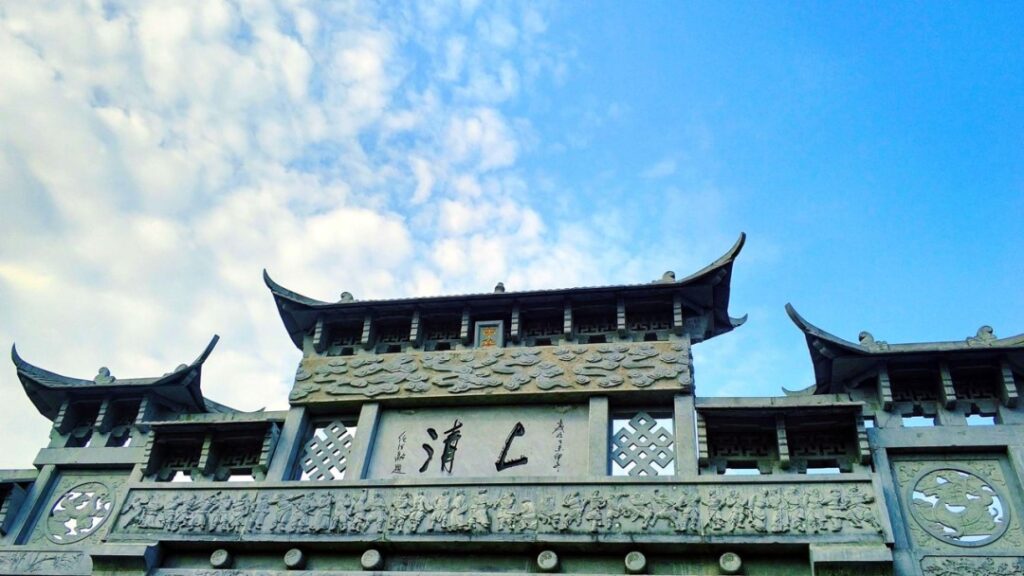
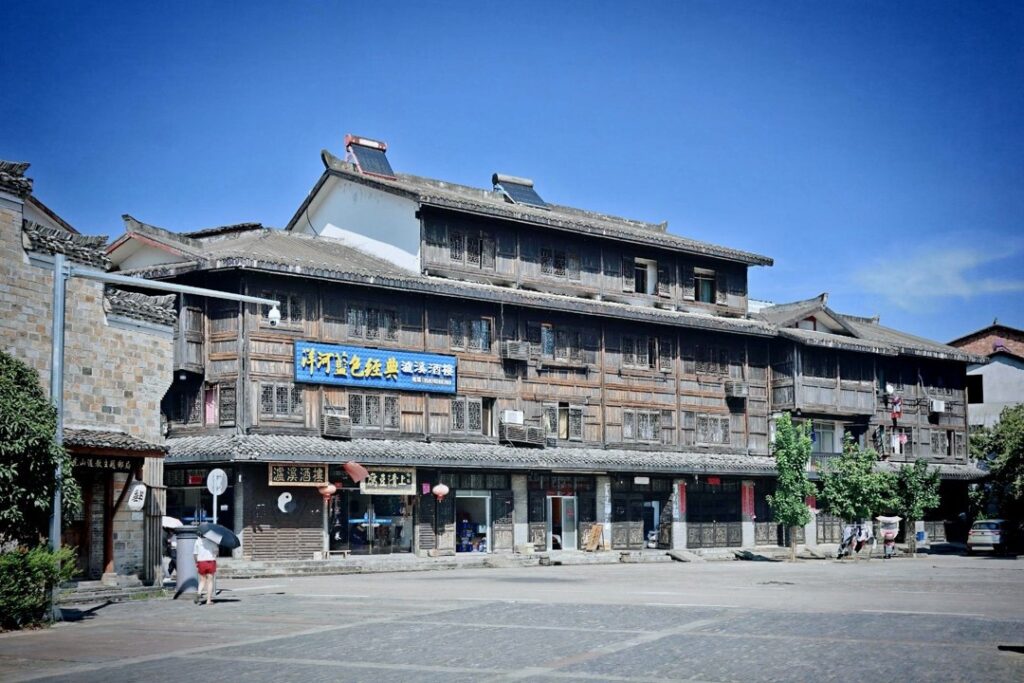
Hiking Routes
The highest peak in the Longhushan Scenic Area is Tianmen Mountain, with an elevation of 1,300 meters, located 5 kilometers south of Shangqing Town. It has been developed into an ecological tourism area and is considered a peripheral attraction of Longhushan. The core scenic area of Longhushan doesn’t have very high peaks, and due to its unique Danxia landform, most peaks cannot be climbed to the top. Therefore, we will introduce touring routes for several major attractions within the scenic area.
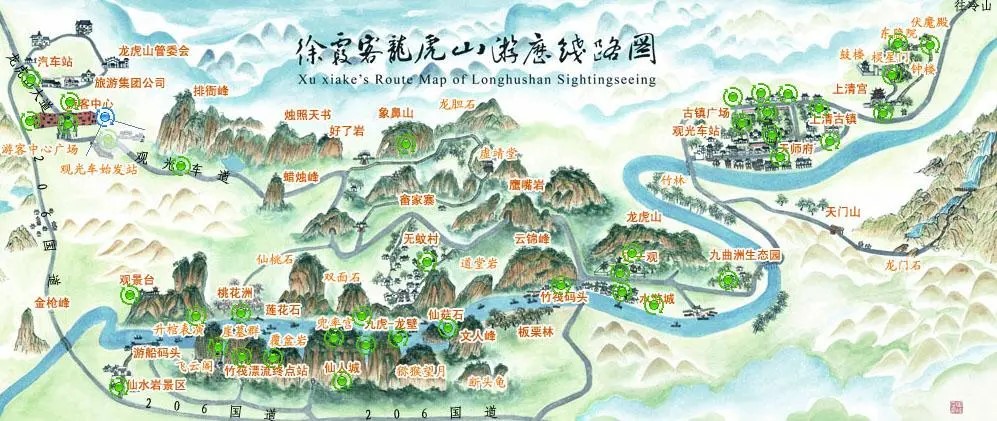
Elephant Trunk Mountain Tour Route: As its name suggests, Elephant Trunk Mountain resembles a giant elephant’s trunk, like a natural sculpture. Climbing the mountain offers a panoramic view of the entire Longhushan range and spectacular sunrise and sunset views. Known as the “World’s First Divine Elephant,” it is a rare Danxia landform landscape.
The route starts from the visitor center, taking a shuttle bus to Yuxian Pool, then following the hiking trail past Houzhang Paiya, Solitary Peak, Little Fairy Rock, Sword-Testing Stone, Danxia Peak Cluster, Elephant Trunk Mountain, Immortal Pill Box, Elephant-Viewing Platform, Blessed Land Gate, Thumb Mountain, Thread of Sky, Lion Looking Back, and ending at the south gate of Elephant Trunk Mountain. The total tour time is about 2 hours.
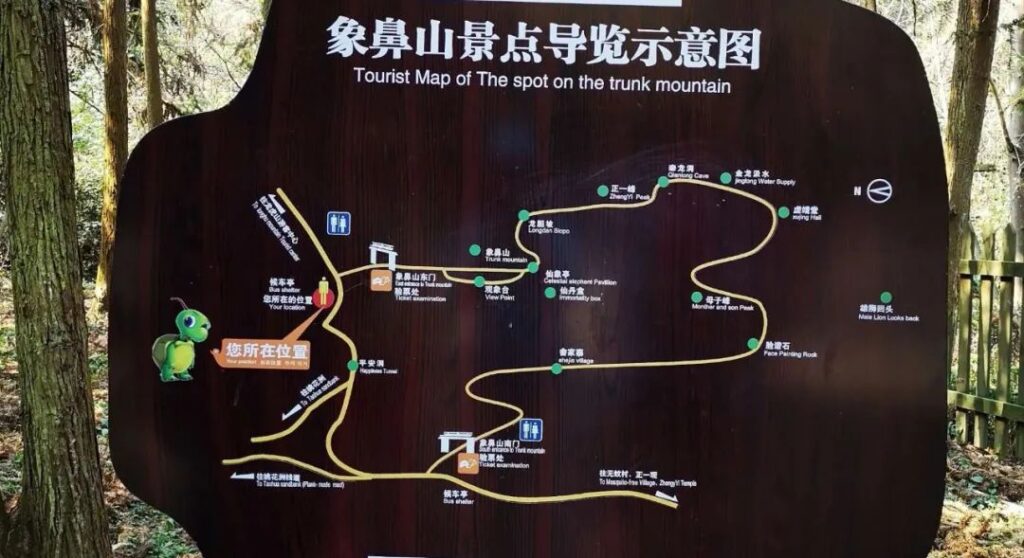

Zhengyi Temple Tour Route: Covering over 60 mu (about 4 hectares), Zhengyi Temple faces west and is symmetrical from north to south. The entire building complex features gray tiles and white walls, with an elegant and magnificent atmosphere. It is one of the eight major land attractions of Longhushan. Take the scenic area shuttle to Zhengyi Temple, enter through the main gate, and visit the Bell and Drum Tower, God of Wealth Hall, Patriarch Hall, and Jade Emperor Tower in sequence. The tour takes about 1.5 hours.
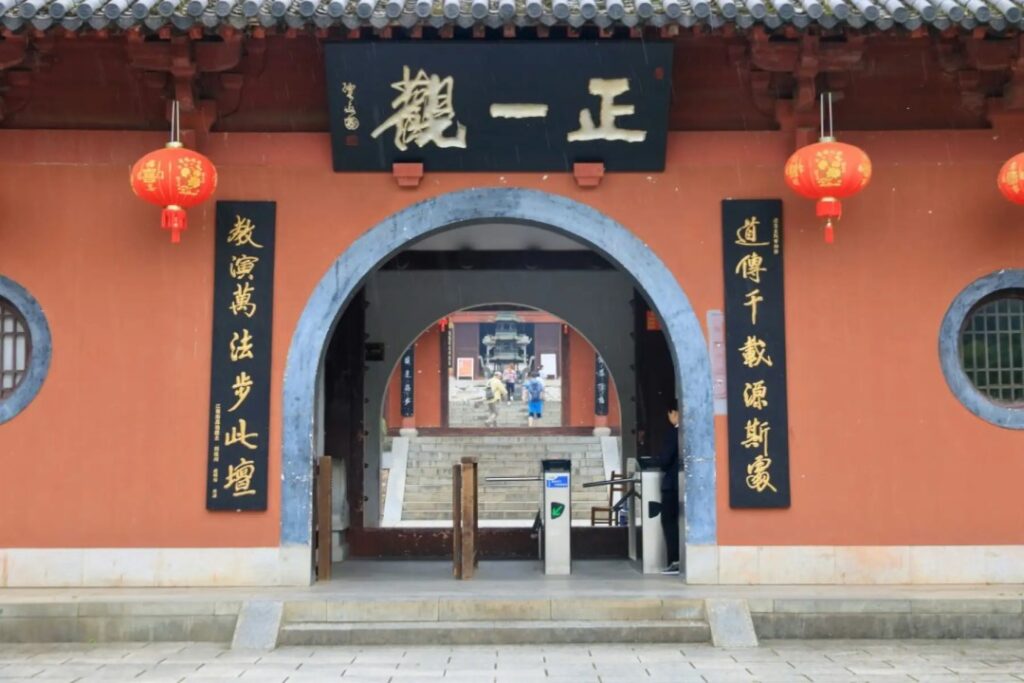

Heavenly Master Mansion Tour Route: The full name is “Han Dynasty Heavenly Master Mansion,” which served as the headquarters for successive Heavenly Masters managing Taoist affairs and as their residence. It holds several records in Taoist architectural history and is truly a “Dwelling of Immortals and Taoist Holy Land.”
Take the scenic area shuttle to the Heavenly Master Mansion, enter through the entrance, and visit the Xuantan Hall, Han Dynasty Heavenly Master Mansion, Ten Thousand Laws Ancestral Altar, Heavenly Master Hall, and Law and Seal Bureau in sequence.

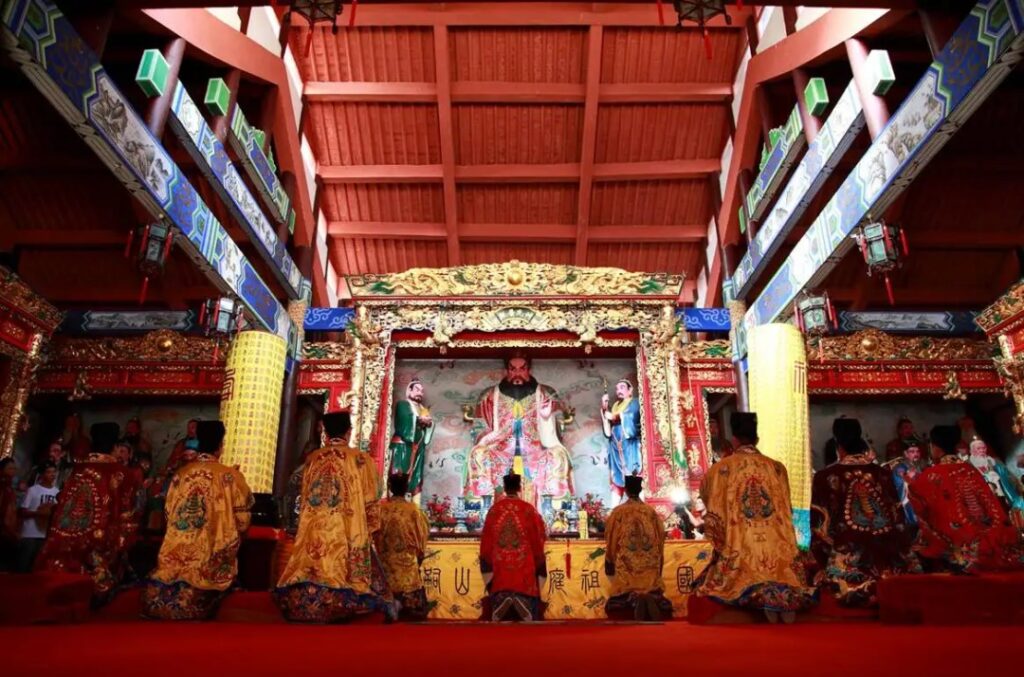
Bamboo Rafting Route: The Luxi River, also known as Yixi or Shangqing Stream (called Baita River in its lower reaches in Yujiang County), originates from the pristine forests of the Wuyi Mountains. It flows through mountains for over 500 li (about 250 km) before entering Yujiang County in Yingtan City, where it joins the Xin River and eventually flows into Poyang Lake.
Visitors can board bamboo rafts at the raft dock and float down the Luxi River, enjoying the poetic landscape of “green waters and red cliffs where tigers and dragons reside, a blessed land hiding immortal courtyards.” The most famous attractions along the way are the twenty-four rocks collectively known as “Immortal Water Rocks.” Visitors can also watch a coffin-raising performance. The total tour time is about 3 hours.
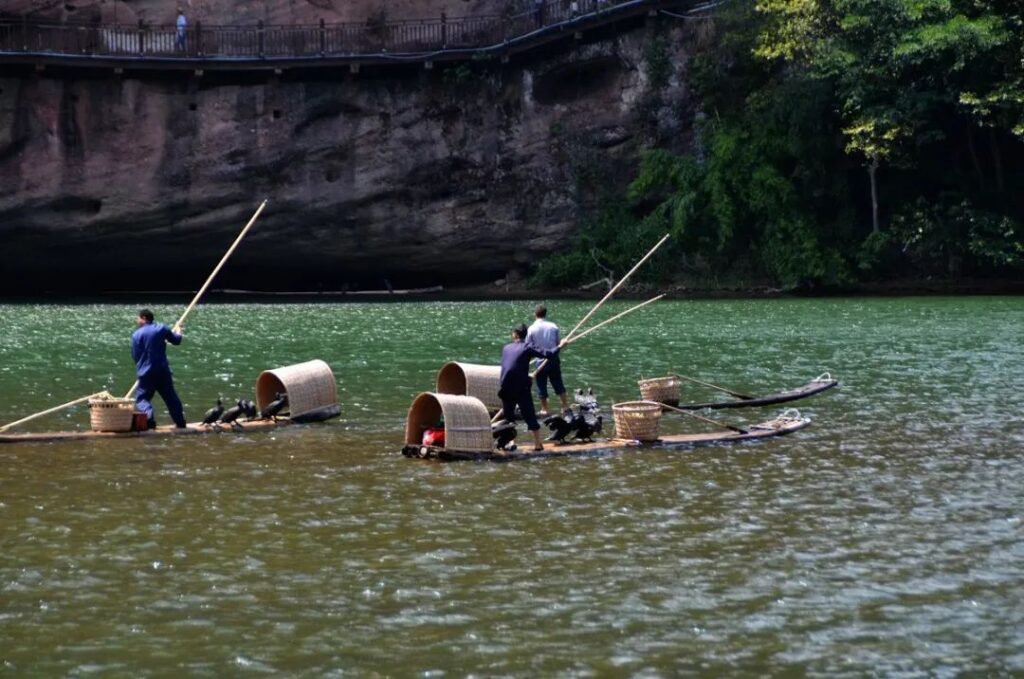
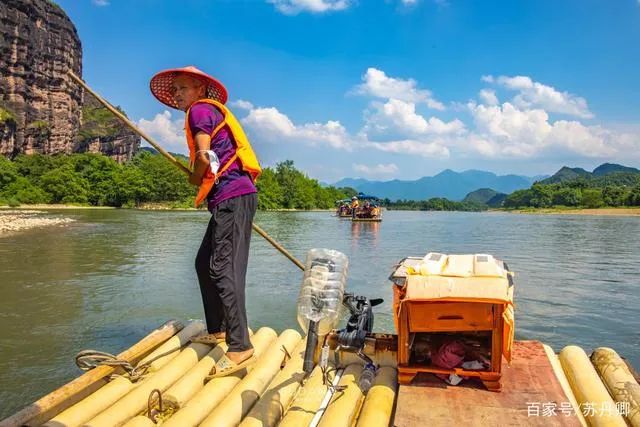
Shangqing Palace Tour Route: Shangqing Palace is one of the most important Taoist sites in Longhushan, where successive Zhang Heavenly Masters conducted major Taoist rituals, preaching, and ordination ceremonies. The palace is grand in scale. Visitors can tour the Dismounting Pavilion, Dragon Street, Taiji Diagram, Great Shangqing Palace, Life-Release Pool, East Hidden Court, Xiaoran Pavilion, and the Ninety-Nine Steps of Longevity in sequence. The tour takes about 1 hour.

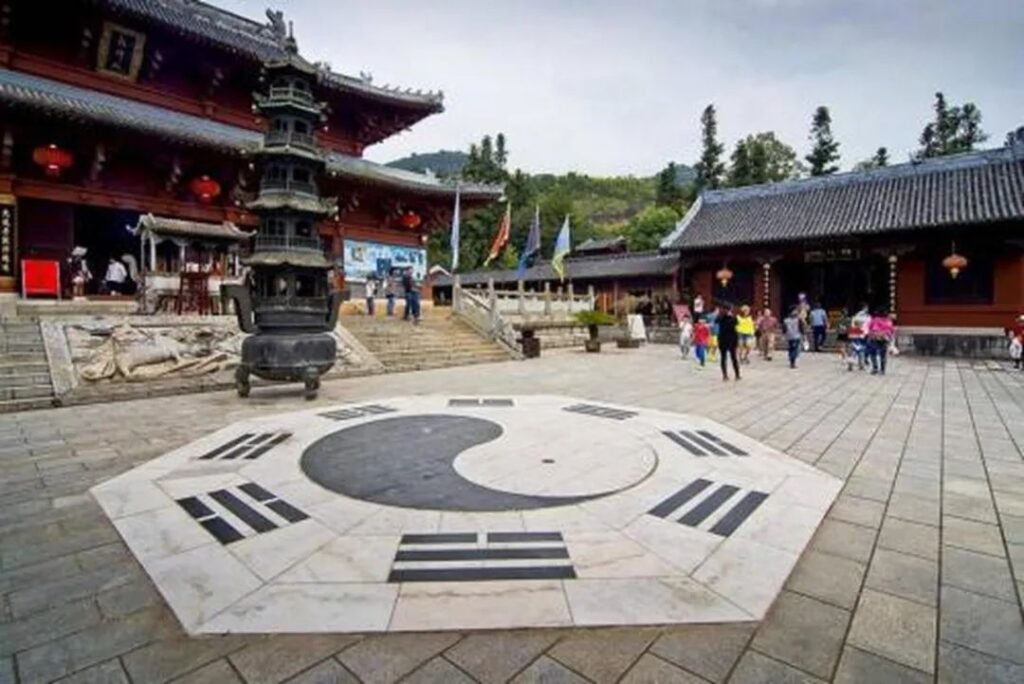
Itinerary Planning
The main attractions in the Longhushan Scenic Area include Elephant Trunk Mountain, Mosquito-Free Village, Luxi River bamboo rafting, coffin-raising performance at Taohua Island, Zhengyi Temple, Shangqing Ancient Town, Heavenly Master Mansion, and Shangqing Palace. The itinerary is primarily organized around visiting these attractions. Although shuttle buses connect all these sites, visiting all of them still requires a considerable amount of time. Below are suggested itineraries for one to two-day visits.
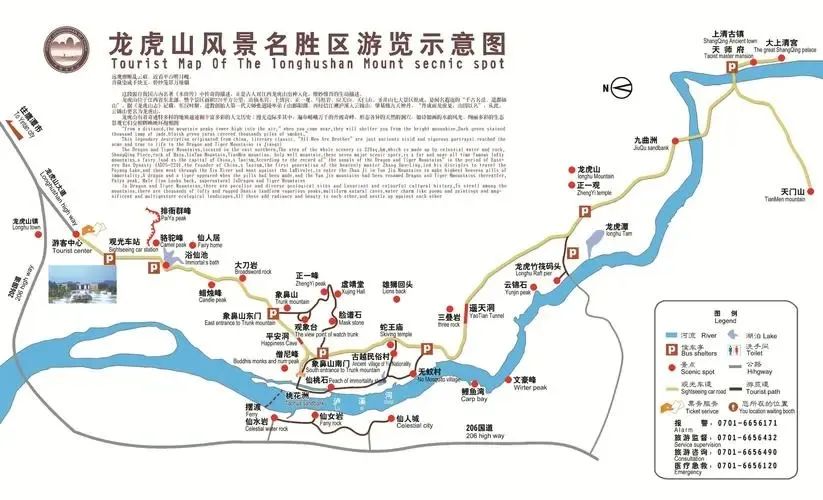
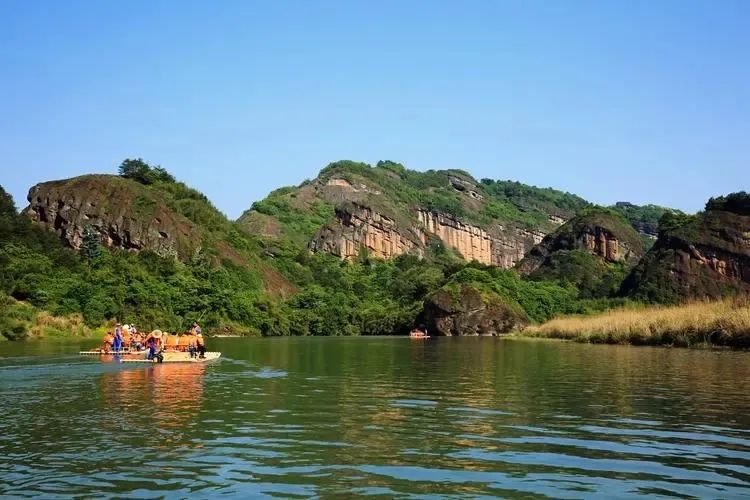
One-day Tour Route:
Option 1: Typically, a one-day tour follows this route: Elephant Trunk Mountain – Taohua Island (watch coffin-raising performance) – Mosquito-Free Village (lunch) – Zhengyi Temple – Shangqing Ancient Town – Heavenly Master Mansion – Shangqing Palace, then return. Note that the shuttle from the visitor center only goes to Zhengyi Temple; from there, you need to change buses to reach Shangqing Ancient Town.
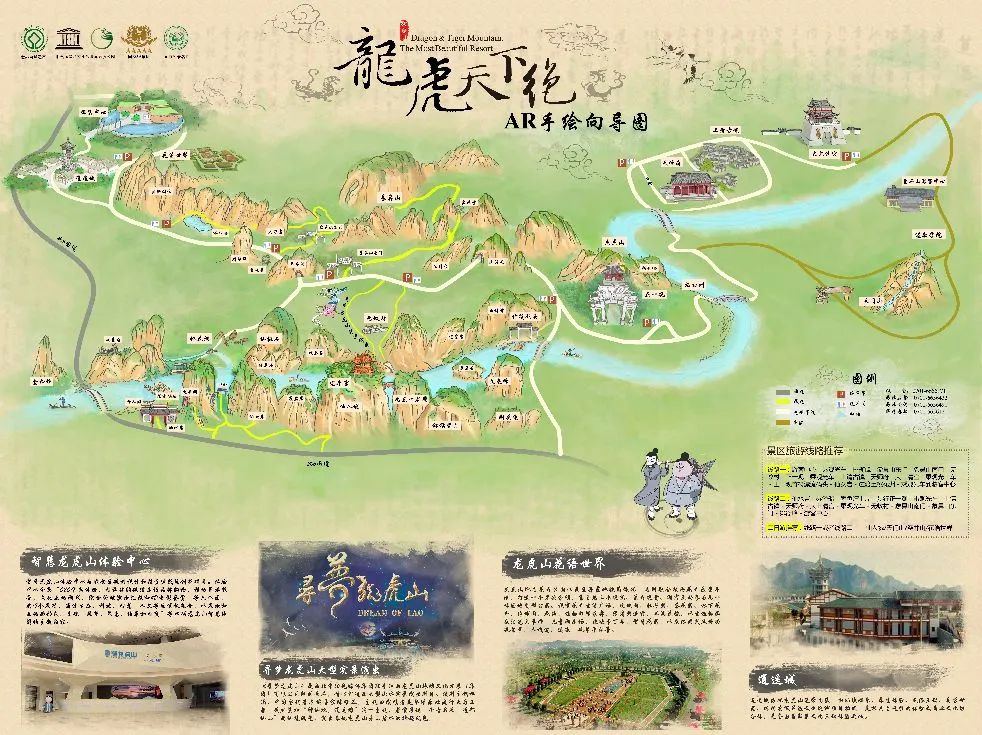
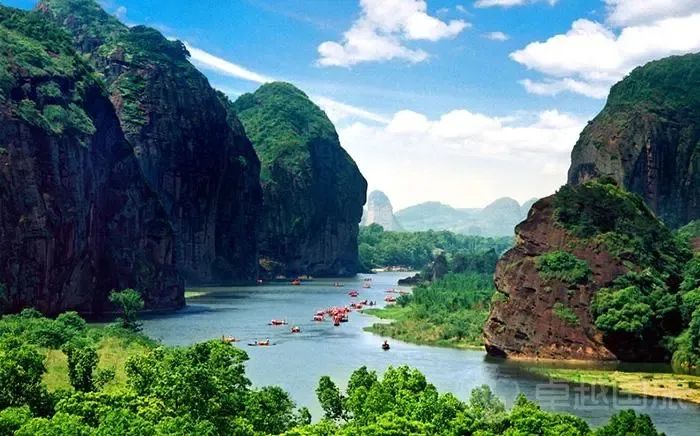
Option 2: Alternatively, you can skip some of the temples or ancient town visits to experience bamboo rafting, which offers more scenic views. From the visitor center, take the shuttle to Elephant Trunk Mountain – tour Elephant Trunk Mountain – take the shuttle to Zhengyi Temple – visit Zhengyi Temple – then take the shuttle to Shangqing Ancient Town – visit Heavenly Master Mansion – in the afternoon, visit Shangqing Palace – take the bus back to Zhengyi Temple – walk to the bamboo raft starting point – enjoy bamboo rafting and admire the green waters and red cliffs – arrive at Taohua Island to watch the coffin-raising performance – return to the visitor center.
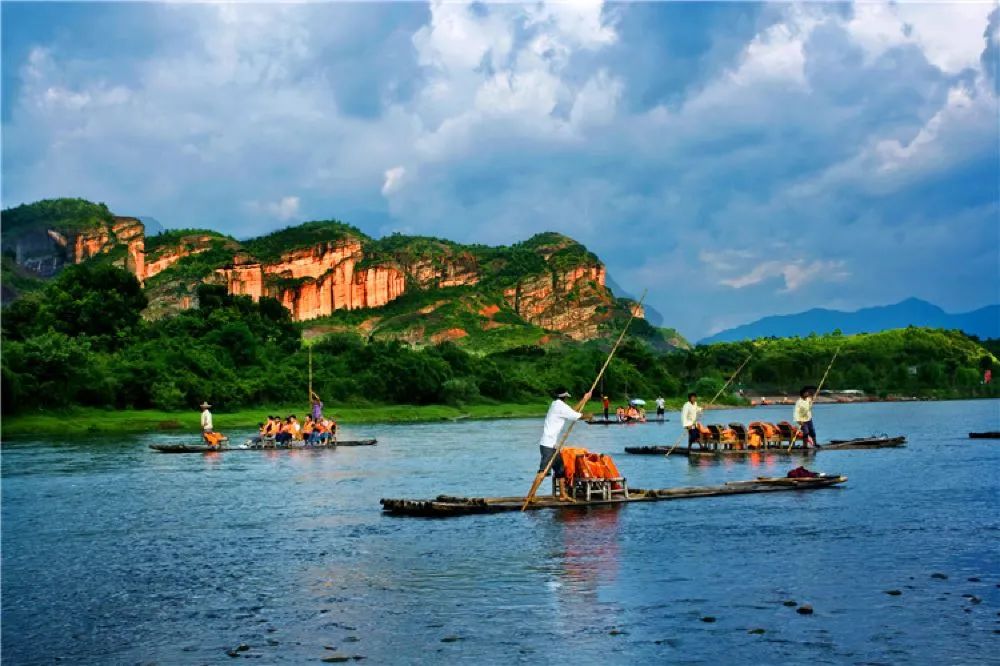
Two-day Tour Route:
Day 1: From the visitor center, take the shuttle to Shangqing Ancient Town – tour the ancient town – visit Heavenly Master Mansion – take the bus to Shangqing Palace – tour Shangqing Palace – have lunch near Shangqing Palace – take the bus to Zhengyi Temple – walk to the bamboo raft starting point – enjoy bamboo rafting – arrive at Taohua Island – watch the coffin-raising performance – stay overnight near the west gate of the scenic area (or return to the visitor center area and watch the “Dream of Longhushan” live performance in the evening).
Day 2: After breakfast – take the bus to Elephant Trunk Mountain – tour Elephant Trunk Mountain from west to east – after descending from the east gate, take the bus to Mosquito-Free Village – visit Mosquito-Free Village – take the bus to Zhengyi Temple – tour Zhengyi Temple – take the bus back to the visitor center to conclude the trip.


Clothing and Food
Longhushan is located in Yingtan City, Jiangxi Province, with moderate temperatures. If staying overnight near Longhushan, bring slightly warmer outerwear than usual. If visiting in summer, be sure to bring sun protection. The scenic area has well-developed services, with food and drinks available at various attractions. Some temples also offer vegetarian meals for visitors. Elephant Trunk Mountain mainly consists of plank walks, so wear comfortable, non-slip shoes as there is a lot of walking within the attractions. You may also bring some snacks to replenish energy.
Regarding the scenic area shuttle buses, they operate in three segments: the first segment runs between the visitor center and Zhengyi Temple, the second between Zhengyi Temple and Shangqing Ancient Town, and the third between Shangqing Ancient Town and Shangqing Palace. You need to change buses at the end of each segment to continue your journey.

Costs
- Scenic area entrance ticket and shuttle bus: 135 yuan/person
- Scenic area entrance ticket, shuttle bus, and bamboo raft ticket: 230 yuan/person
- “Dream of Longhushan” performance: 178 yuan/person
